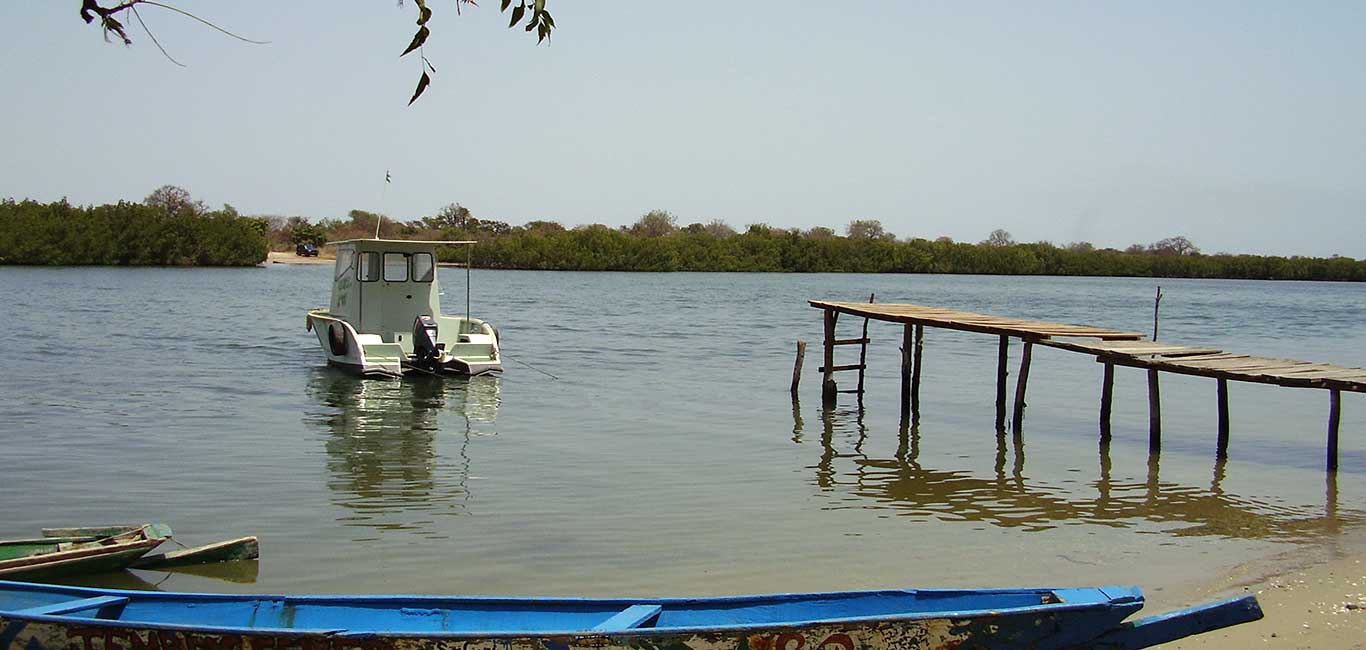Jinack Island

Jinack Island is a small island located in the Gambia River estuary, near the border with Senegal. It is part of the Nuimi National Park and is known for its unspoiled and fairly secluded beaches, which span over 11 kilometers.
The island is surrounded by mangrove swamps and has a small population of around 1,500 people who are mostly fishermen and farmers. There are no paved roads or vehicles on the island, and most transportation is done by foot, bicycle, or donkey cart.
Visitors to Jinack can enjoy the peaceful and laid-back atmosphere of the island and explore its sandy beaches, clear waters, and diverse marine life. The island is a popular destination for dolphin watching, and visitors may also spot sea turtles, various species of birds, and even crocodiles in the nearby wetlands.
Jinack Island also offers a glimpse into traditional Gambian village life. Visitors can interact with the locals and learn about their daily routines, customs, and traditions. Traditional fishing methods, such as net casting and fish smoking, can also be observed.
The island has limited facilities, but visitors can find basic accommodations and dining options. Camping is also allowed on the beach, with permission from the local authorities.
Who lives around there?
Jinack Island is located in the Nuimi District, which is home to various ethnic groups such as the Jola, Mandinka, Fula, Serahule, and Wolof people. The island itself is inhabited by the Jola people, who have a unique culture and language. Fishing is a major source of livelihood for the locals, and you can often see them casting their nets from small boats or repairing their fishing gear on the shore. Many villagers also engage in agriculture and craft-making, producing items such as baskets and textiles. The island has a small village with traditional thatched roof huts, and visitors can learn about the local culture by interacting with the residents.
What is the history?
Jinack is located in the Gambia, a small West African country. The island has a long history, dating back to pre-colonial times when it was inhabited by the Jola people, who still live in the surrounding area.
During the colonial era, the island was used as a base for Portuguese traders who sailed up the Gambia River to trade with local tribes. In the 19th century, the British established a settlement on the island, and it became an important center for trading and commerce.
After Gambia gained independence from Britain in 1965, the island remained an important hub for fishing and agriculture. In recent years, it has also become a popular destination for ecotourism, with visitors drawn to its pristine beaches and abundant wildlife.
Today, Jinack Island is part of the Nuimi National Park, which was established in 2008 to protect the unique ecosystem of the region. The park encompasses a range of habitats, from mangrove swamps to savannas and coastal forests, and is home to a variety of rare and endangered species, including monkeys, hyenas, and manatees.
What are the opening hours?
The island is not a tourist destination, it doesn’t have specific opening hours. However, if you plan to visit the island as part of the Nuimi National Park, it’s important to note that the park’s opening hours are from sunrise to sunset.
What are the food choices?
As Jinack Island is a remote area, the food choices are limited. There are a few small restaurants and cafes on the island that serve local Gambian dishes such as yassa, domoda, benachin, and grilled fish. Some restaurants may also serve international dishes like pasta and pizza, but the options may be limited. It is recommended to bring some snacks and bottled water with you when visiting Jinack Island.
How to get there?
To get to Jinack Island, you will need to take a boat or ferry from Barra, which is located on the north bank of the Gambia River. You can reach Barra from Banjul by crossing the river on a ferry or taking a taxi or shared taxi. From Barra, there are several boats and ferries that offer transport to Jinack Island, and the journey takes approximately 30 minutes to 1 hour, depending on the type of boat you take. It is advisable to make arrangements with a boat operator in advance, as schedules may vary depending on the time of year and weather conditions.

